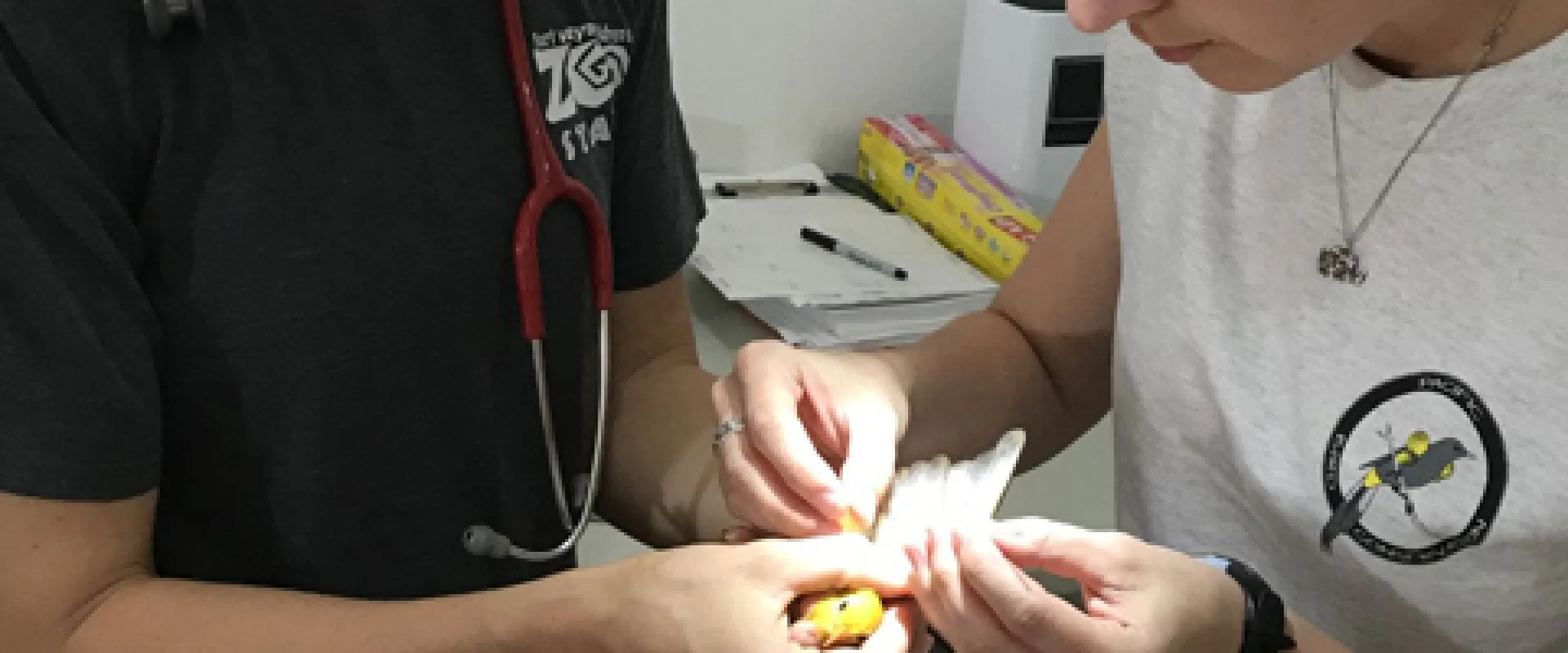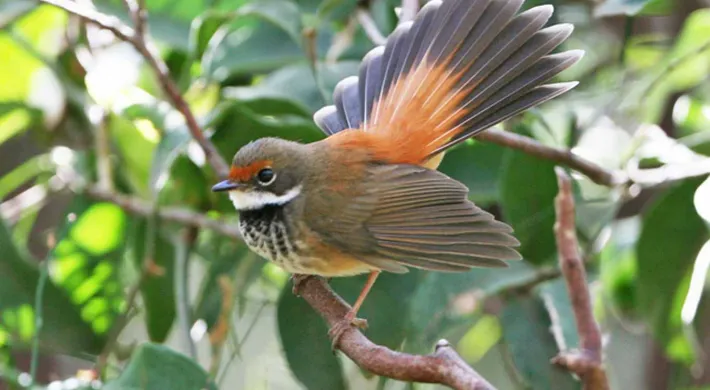Written by Heather Scott, Hospital Manager, North Carolina Zoo
Check out the first blog published about the Mariana's Bird Project.
Two years ago, I was invited to participate in the North Carolina Zoo’s bird conservation project in the Northern Mariana Islands with our former general curator, Ken Reininger. I was so excited to be offered the opportunity, and so terrified to be traveling halfway around the world! After delving into the project goals for ensuring the continued existence of Pacific Island bird species and learning the history of the islands, including that Guam has no native birds left in the wild, I became even more excited to be part of this team.
At first I was expecting to solely be a part of the field team, going out early in the morning to set up the mist nets and capturing the target bird species. However, I was able to assist in the medical care aspect of the project as a veterinary nurse. I work with many different species here at the North Carolina Zoo, including the golden white-eye and am comfortable with handling these small birds, collecting biological samples from them and doing all of this efficiently to minimize their time being handled. The rufous fantail is basically a ping-pong ball with wings, so handling these guys and doing exams on them can be quite the challenge.
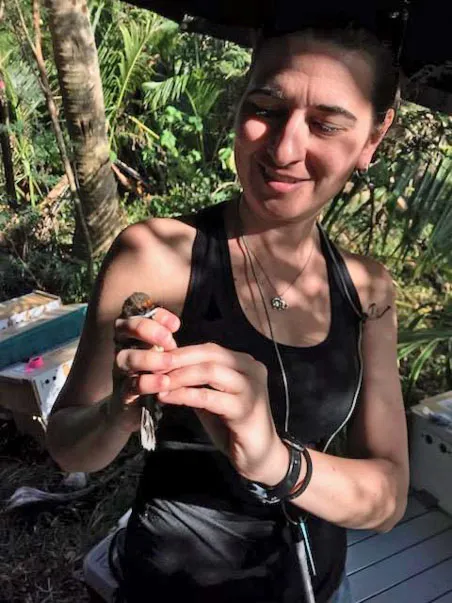
Heather holding a rufous fantail
Our field hospital is pretty minimal since all of the supplies have to be shipped in or transported by a team member and we are working in a pretty small space. So we have to be organized and efficient with our space and supplies. When a bird comes in from the field it is weighed and measured to get it’s baseline physiological information. Each bird receives an individually identifying series of leg bands, both a color and a number. This way we can keep track of each bird and they can be remotely identified at later surveys on their new island homes. Once the bird has it’s bands the medical exam begins.

Pictured Above: Hospital setup, prepped for incoming birds
The bird is examined from beak to tail to check overall body condition, feather quality, and for the presence of any external parasites. We also collect biological samples for research. A feather is plucked for DNA sexing to determine the male:female ratio of each translocation trip, that's the easy part. Collecting blood from a 10 gram bird is not as easy as it sounds. Sometimes their blood vessels appear about as big as a piece of thread. We only collect 1-2 drops since they don’t have much to give up. One drop of blood is spread on a glass slide for later evaluation of their blood cells and the other drop is placed in solution for further DNA testing. Oftentimes, we offer the birds a small sip of dextrose to give them a little extra boost after the handling and blood collection then place them in their housing box to rest. This process is repeated for every bird as it comes in from the field, up to 15-20 birds a day.
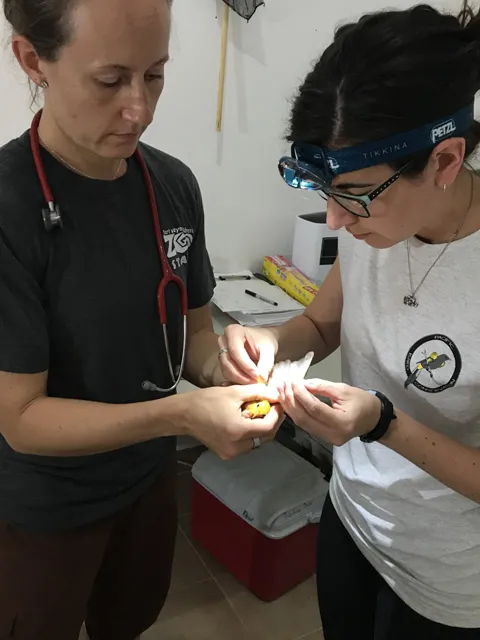
Heather taking a blood sample from a golden white-eye
Every day starts around 4:30 a.m. as the teams gear up to either head out into the field to the mist nets, or head into the bird room to feed, clean, and care for the birds that are already waiting for their big trip to a new island. Each morning also starts with poop. You can learn a lot about an animal simply by looking at it’s poop. My part of the project involves lots of poop. We collect as much poop as these tiny birds can produce, all day every day. This poop is then analyzed for intestinal parasites, stress hormones, and overall quality. This helps us make sure that we are doing everything we can to keep the birds healthy during their time with us. By testing for stress hormone levels, we are able to make adjustments to capture, housing, and handling protocols for future trips.
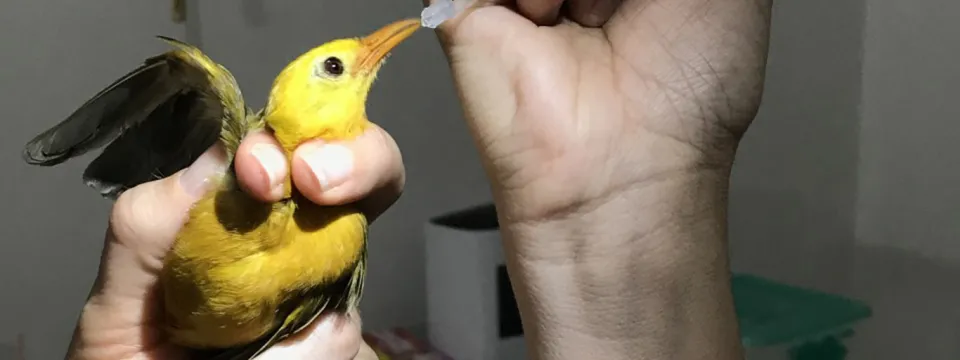
Pictured Above: Golden white-eye receiving oral dextrose post blood draw
Both years that I have been a part of the project, we have targeted both rufous fantail and golden white-eye species to move to a new island home. The rufous fantail is definitely a bird of legend. They are tiny, feisty, and love to flash their tails. They have so much attitude and personality for such a tiny bird. The golden white-eye is just as feisty and has such a beautiful song. Each day, as we feed and clean the bird room, where all the birds are housed before their big trip, the birds would slowly increase their song. It is a daily reminder of why we are here doing this work, to preserve these beautiful species for future generations.
